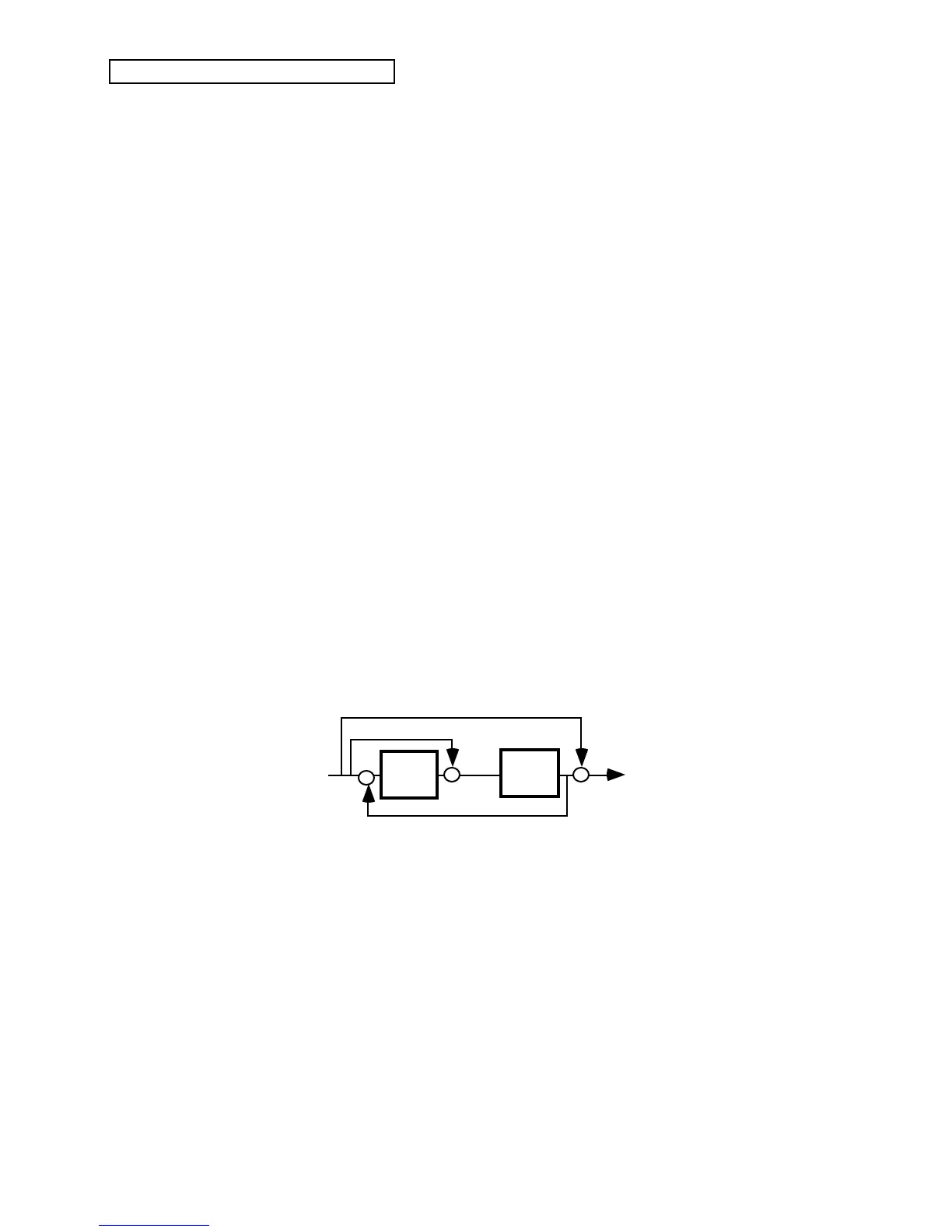Glossary
IV ENSONIQ DP/4+ Reference Manual
Digital Delay An algorithm that causes source signals to be moved later in time relative to the original
Line (DDL) signal. These “delayed” signals are used to create a myriad of audio effects, such as echo
and reverb.
Dual Mono A term used in the DP/4+ to describe one signal routing option. Two inputs are treated
as separate mono signals rather than as a stereo pair. This option processes the two input
sources as two discrete mono outputs. A useful option when more individual effects are
needed.
Early Early reflections are delayed signals that determine how we localize and perceive size of
Reflections ambient spaces. In the case of a room, where the signal is bounced off all surfaces
(walls/ceiling/floor), the perception of the summation of these delayed signals creates
what we term ambience. In the DP/4+, you can control these delays to create various
environments.
Echo A delay that is perceived as a discrete repeat of the original sound. A classic example of
an echo is the effect of shouting into a canyon. You will hear your voice delayed and
repeated throughout the canyon. Generally, echoes are created by long delay times.
Expander An algorithm that increases the dynamic range of a source signal by making loud signals
louder and soft signals softer. Expansion can be used to lower noise on poorly recorded
tracks, or to help control leakage while recording. Signals below threshold are
attenuated, signals above threshold are passed with a controllable fixed gain.
Equalization The process of altering the frequency response (tone) of a signal (also called “EQ”).
Feedback A signal routing in which the output of an effect is mixed back into the input. Feedback
of a delay line is also called regeneration.
Feedback 1 A two-unit signal routing option in the DP/4+ as shown below. The A and B units are in
series; the output of the B unit is mixed back into the input of the A unit:
Feedback 1
The feedback amount is available among the config parameters. For example, if A were a
delay and B were an EQ, the feedback path would cause the delay to regenerate with the
EQ in the regeneration path. In Feedback 1, the wet/dry mix of the B unit combines the
dry input to A with the output of B. When set to full dry (0) only the dry input signal is
heard.

